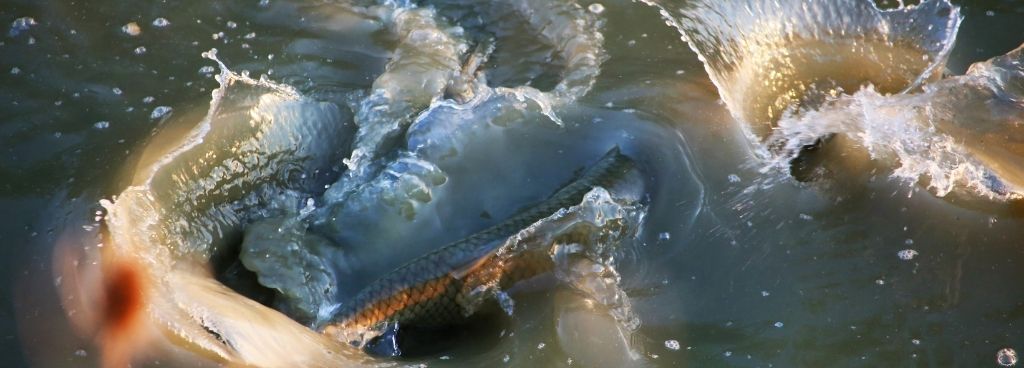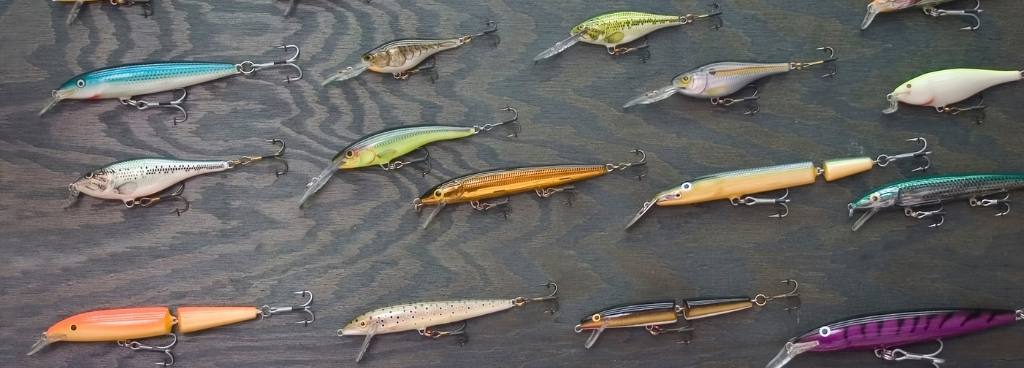Stories Worth Reeling In...
Last Updated on October 16, 2023
Fishing in muddy waters presents anglers with a unique set of challenges. When the water clarity is low, fish have limited visibility, making it more difficult for them to locate prey.
In such conditions, choosing the right lures becomes crucial. The wrong lure can easily go unnoticed in muddy waters, resulting in a frustrating day of fishing.
From soft plastics and spinnerbaits to crankbaits and jigs, we’ll delve into lure types, colors, and techniques to help you land that elusive bass, even when the water’s murky. So, let’s dive in and master the art of bass fishing in muddy waters.
Table of Contents
Muddy water, in the context of bass fishing, refers to water with low visibility due to suspended sediments, algae, or other particles. This can occur for various reasons, including recent rainfall, lake turnover, or local runoff. The resulting turbid, murky conditions make it challenging for bass to see their prey and, in turn, pose a unique challenge for anglers.
In clear water, bass can rely on their keen vision to spot and ambush prey from a distance. However, in muddy water, their visual range is significantly limited. As a result, they tend to rely more on their lateral line, a sensory organ that detects vibrations in the water, to locate prey.

Soft plastic lures are incredibly versatile and perform exceptionally well in muddy water. Their natural feel and lifelike movement make them ideal for enticing bass in low-visibility conditions.
Creature baits, with their unique shapes and appendages, create a commotion in the water that bass can detect through their lateral line. Worms, particularly those with curly tails, generate vibrations and are easy for bass to locate even when visibility is limited.
The spinning blades on these lures produce vibrations and flashes that are highly effective in attracting bass. Their unique design allows them to work well in various water conditions, but they truly shine in low visibility.
When opting for spinnerbaits in muddy water, consider using larger sizes with blades that create strong vibrations. Dark-colored spinnerbaits with contrasting, flashy blades tend to work best.
Chatterbaits are excellent for fishing in turbid waters because of the distinct chatter or vibration they produce. This noise and movement mimic distressed prey, making them irresistible to bass.
Trailers like swimbaits or paddle tails can add extra movement and vibration. This combination will help bass locate and strike your lure, even when they can’t rely on their sight.
Crankbaits are effective in muddy water because they closely imitate the behavior of distressed prey. Their wobbling action, combined with the noise created by built-in rattles, captures the bass’ attention.
In muddy water, opt for crankbaits with loud rattles. The noise will help the bass hone in on your lure. Choose crankbaits in bold, contrasting colors, such as chartreuse, red, or orange. These colors stand out well in murky conditions, increasing your chances of success.
Jigs are known for their slow, methodical presentation, which can be highly effective in low-visibility water. The subtle movements of a jig paired with a trailer can entice even the most cautious bass.
Consider using jigs with trailers like chunk-style craws or double-tail grubs. These create vibrations and movement that bass can detect through their lateral line.

The primary goal when selecting lure colors for muddy water is to make your offering stand out. Bright, high-contrast colors are key to achieving this. Here’s why:
To increase your chances of success, focus on targeting shallow areas like flats, coves, and creek mouths. These locations are often teeming with prey and can be prime hunting grounds for bass.
Slow retrieves are your best friend. Bass might struggle to pinpoint their lure amidst the murk, so a more leisurely approach gives them time to react. This is where lures like jigs, soft plastics, and crankbaits come into their own.
Cast parallel to the shore and cover a variety of depths. By doing so, you increase your chances of encountering bass, even in these challenging conditions.
Monofilament lines are known for their buoyancy, which can keep your lures and bait higher in the water column. Alternatively, fluorocarbon lines are less visible underwater, which can help if bass are more timid in their strikes.
Leaders also play a significant role in your setup. When using certain lures like spinnerbaits or crankbaits, a fluorocarbon leader can be employed. This leader material combines the low visibility of fluorocarbon with its resistance to abrasion, ensuring your line remains intact when battling with bass near structure.
While you can use some of the same lures, specific lures like soft plastics, spinnerbaits, chatterbaits, crankbaits, and jigs are better suited for muddy water due to their unique features that attract bass in low visibility.
A slow retrieve is generally more effective in murky water. It gives bass more time to react to your lure, improving your chances of a strike.
You can absolutely catch bass in muddy water. In fact, many anglers have their best days during these conditions. Bass adapts to their environment, and by using the right lures and techniques, you can successfully target them in murky waters.
Adapting your fishing line can be beneficial. Monofilament and fluorocarbon lines each have advantages. Monofilament’s buoyancy keeps lures higher in the water column, while fluorocarbon’s low visibility can be an asset.
In the world of bass fishing, the challenge of landing bass in muddy waters can be both exciting and rewarding. You’ve now learned the essential tools, techniques, and strategies to turn challenging conditions into opportunities for a great day on the water.
The knowledge gained here isn’t just theoretical; it’s meant to be put into practice. Success in muddy waters is well within your grasp. Get out there, go fishing, and enjoy the thrill of landing those bass even when the water isn’t crystal clear. Happy fishing!